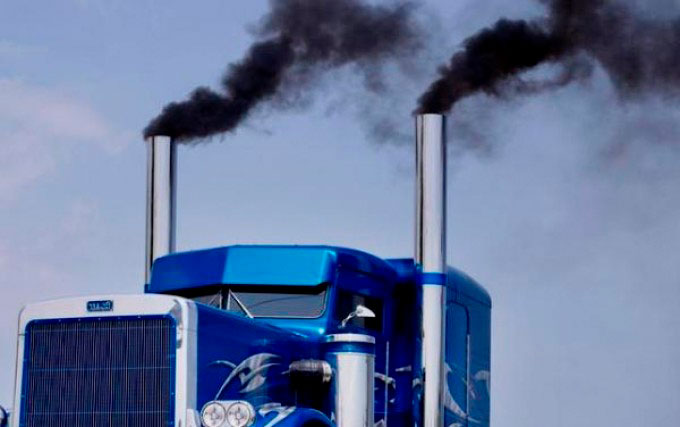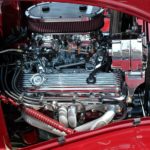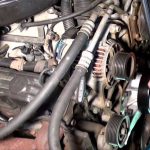
What are exhaust gases?
Usually made from cast iron or stainless steel, an exhaust manifold collects engine exhaust fumes from multiple cylinders,
(fumes made during the combustion process) and delivers them to the exhaust pipe.
The exhaust pipe in turn, funnels the exhaust gases to a catalytic converter and the muffler.
When an engine starts its exhaust stroke,
the engine piston moves up in the bore of the cylinder, which decreases the total chamber volume.
The exhaust valve opens and the high-pressure gas escapes into the exhaust manifold or header, creating an ‘exhaust pulse’.
Exhaust manifolds can be an important source of backpressure.
Because exhaust gases from one cylinder can build up pressure in the manifold and that affects the next cylinder that uses the manifold.
Exhaust Gases can be harmful to inhale
Making it very important to have a fully functional exhaust manifold for your trucks or fleet vehicles.
Detecting an exhaust leak can be very difficult,
people may inhale exhaust gases without being aware of it.
Exhaust manifolds come in all different types, shapes, and sizes depending on the engine type and model.
Some can have 4 portholes if it’s a 4 cylinder engine, or 6 portholes if it’s a 6 cylinder engine.
No matter size or material of the exhaust manifold, they all perform the same basic function.
Over the last few decades, air emission standards have forced automobiles to improve the exhaust process.
So vehicles are not sending too many harmful pollutants into the air.
These same standards are beginning to catch up with the diesel engines heavy/long haul trucking industry.
As technology improves, so has engine parts. One such improvement was the advent of the EGR system.
What does exhaust gas contain?
Compared to the composition of air,
the diesel exhaust gas contains increased concentrations of water vapor (H2O) and carbon dioxide (CO2)—the main combustion products.
The concentrations of both H2O and CO2 can vary from a few percent, up to about 12% in diesel exhaust.
These combustion products displace oxygen, the concentration of which can vary from a few percent, up to about 17% (compared to 21% in ambient air).
The main component of diesel exhaust, just as is the case with ambient air, is nitrogen (N2).
By comparison, the concentrations of diesel exhaust pollutants are very small.
For the purpose of calculating the physical properties of diesel exhaust gas, they can be neglected.
Resource: Diesel Exhaust Gas
What is exhaust gas recirculation?
Exhaust Gas Recirculation is a process that is supposed to reduce the nitrogen oxide emissions that are released into the air, by engines in general.
This is done by recirculating some of the engines exhaust gases back into the engine itself.
With diesel engines, the exhaust gas replaces some of the excess oxygen in the pre-combustion mixture,
and can lead to lower temperatures in the lower combustion chamber, which can result in a loss of engine efficiency.
With the introduction of EGR, many engine parts have been redesigned to accommodate this new system.
Different Parts have been redesigned specifically for EGR systems such as:
- Exhaust Manifolds.
- Oil Coolers.
- Water pumps.
Exhaust gas recirculation valve
The first EGR systems were crude and simple in design.
Some cases, an orifice jet between the exhaust & intake tracts, circulating air from exhaust to the intake, while the engine was running.
This design resulted in rough idling & reduced performance.
The exhaust gas recirculation valve controlled by a manifold vacuum was added to control the flow from exhaust to intake, under certain conditions.
In modern diesel engines, EGR gas is cooled with a heat exchanger to allow the introduction of a greater mass of recirculated gas.
Exhaust Gas Recirculation is now a requirement in most modern engines, due to emission regulation standards.





